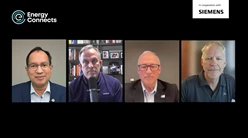Australia Emitters Rely on Credits to Meet New Climate Goals
(Bloomberg) -- Australia’s biggest polluters have relied heavily on carbon credits to offset their climate footprint and made only small cuts to actual emissions, according to data released on Tuesday, in a major test of Prime Minister Anthony Albanese’s green reforms.
More than 200 facilities covered under the Safeguard Mechanism trimmed their emissions by 2.7 million tons of carbon dioxide equivalent, or 1.9%, to 136 million tons for the year through June 2024. Carbon credits worth 8.5 million tons of CO2e were surrendered to meet compliance obligations.
Deeper on-site emissions cuts are only expected over the next decade, said John Connor, chief executive officer of Carbon Market Institute. The “key thing is we see some continuity in this framework and it’s strengthening investment signals,” he said.
Albanese’s climate credentials will be on the line during a May 3 election, where his Labor Party faces a close race with the center-right opposition and may need the support of the Greens. Albanese won the previous election in 2022 on a platform that included shedding the country’s reputation as a climate laggard — partly because massive natural gas and coal industries had turned the nation into one of the world’s biggest per-capita emitters.

His reforms included the introduction of Safeguard Mechanism Credits, or SMCs, which are tradeable carbon credits issued by the Clean Energy Regulator to large facilities that cut their emissions below their government-set baselines.
SMCs are distinct from Australia Carbon Credit Units, known as ACCUs, which are issued by the regulator to developers with projects that avoid or remove emissions and are purchased by polluters exceeding their target. ACCUs surged to a record of A$42.38 ($27) a ton on Nov. 19, likely on demand from companies that found themselves exceeding their emissions baselines and needed to buy credits for the compliance period ending in March. The credits fell as much as 2.2% to A$33.25 on Tuesday.

“Today’s data release should be viewed as a small first step, but an important one,” said Hugh Grossman, the chief executive officer of RepuTex Energy, a carbon and energy analytics firm. “The market infrastructure is now in place to guide industry decarbonisation and investment in new low emissions technology.”
Achieving the nation’s 2030 target to cut pollution by 43% from a 2005 baseline could hinge on the election as the two main political groups hold opposing views on climate progress. Opposition candidate and Liberal Party leader Peter Dutton has argued that the 2030 goal is unachievable, although he remains committed to achieving net zero by 2050.
The Safeguard Mechanism applies to facilities that spew more than 100,000 tons of carbon dioxide equivalent a year and covers assets responsible for about 30% of the nation’s total emissions.
(Updates with details throughout.)
©2025 Bloomberg L.P.





